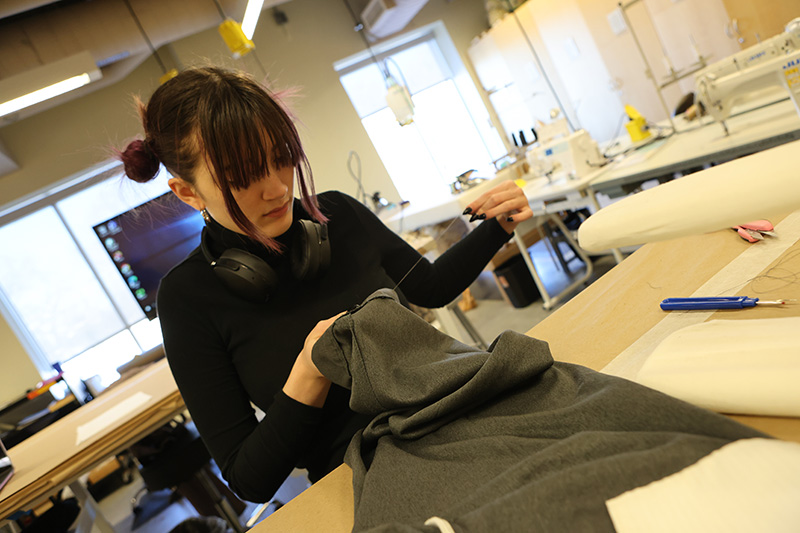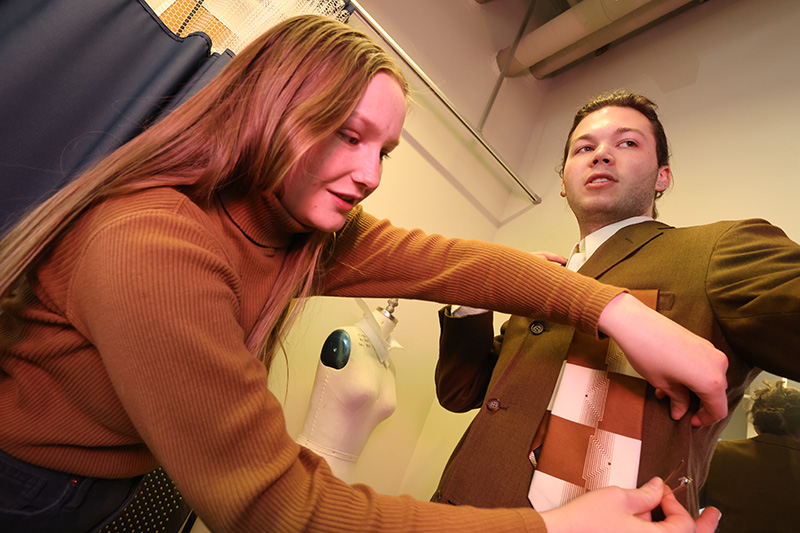- Apply
- Visit
- Request Info
- Give
'Lights, camera, action!'
Behind the scenes of Eastern stage productions
Written by Elisabeth Craig
Published on March 20, 2024
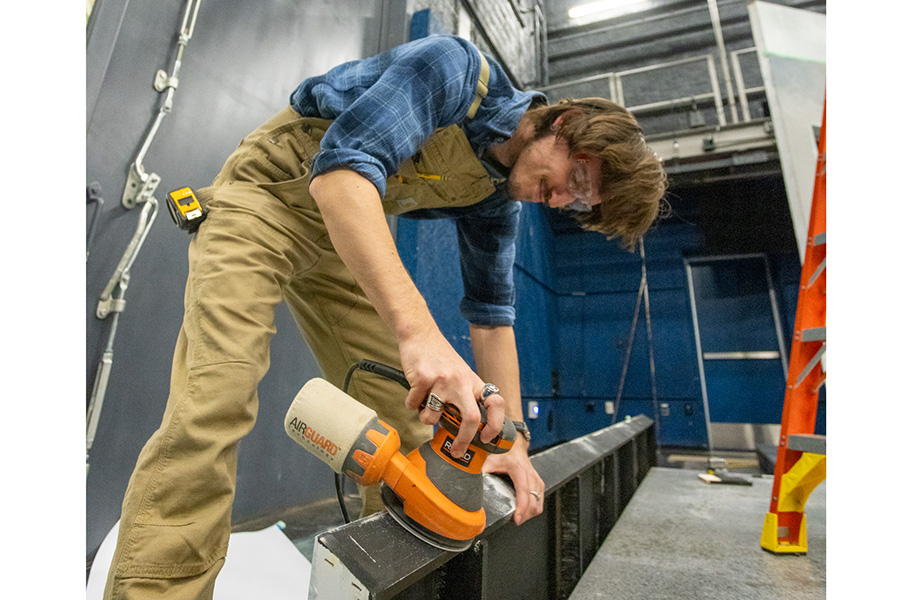
Many have heard the phrase “lights, camera, action” regarding the performing arts, but few think about the action behind the lights and camera. Students, faculty and staff of the Department of Communication, Film and Theatre at Eastern Connecticut State University are hard at work in the months leading up to a stage show’s premiere. Under faculty supervision, students routinely take the reins backstage of the theatrical productions.
The lights that come before the camera and action are an industry of their own. Theatre student Zach Beaumont, who was the assistant lighting designer for this semester's production of “Blithe Spirit,” illuminated the fine details involved in manipulating light to create dramatic effect.
“It always sounds so strange to ‘design light,’ but in reality, our experience with light, such as directionality and color, is so deeply innate that we don't really notice the extent of its ability to affect our emotions,” said Beaumont.
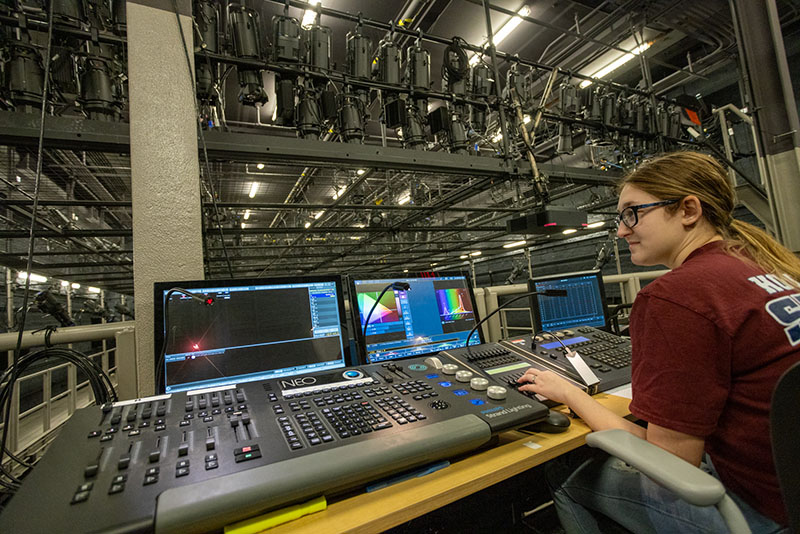
Beaumont also explained that lighting design affects and is affected by the other aspects of theatre, serving as the glue between the visual look of the costumes, sound and projections.
“If the costumes or set are reflective or contain colors that clash with the color of light in a particular scene, the designers need to compromise or make changes in order to resolve those issues,” he said. “And with sound design, let's say there is a lightning strike in the script ... Both the sound and light designers would have to work together to make sure the sound effect and flash trigger at the same time and come from the same location on set.”
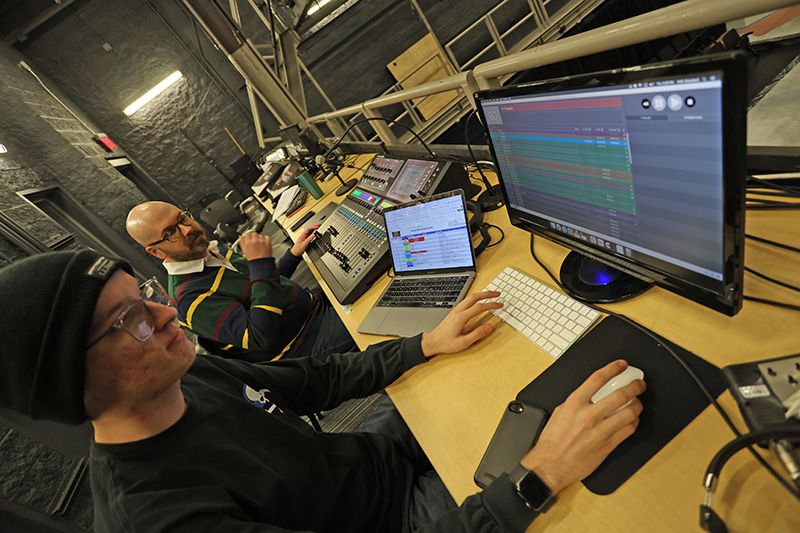
Sound design, though not seen and only heard, is a delicate process and a vital part of a show. Senior Ethan Pervere, who conducted sound design for “Blithe Spirit,” gave some examples that illustrate the careful balance of sound, sound effects, resonance and frequencies.
“A lot of my work is to find individual sounds from interior and exterior environments, such as birds chirping, wind, rain, the sound of a fireplace or the sound of a clock," said Pervere. "In addition to the aural environments, I am also creating spot effects, which are small snippets of sounds like doorbells and knocks. For 'Blithe Spirit,' we dealt with ghosts, so I played around with bumps being heard around the space during the seances, so the audience questioned where the sounds were coming from."
Student tech workers serve as the backbone for theatre productions. Senior Daniel Gallipoli, who has worked as an audio engineer on the sets of “Carrie” and “Blithe Spirit,” explained the importance that strong worker morale has in developing the schematics of a show.
“Theatre is a fast-paced environment where things are constantly changing, but being a part of a team like that makes it feel a little more manageable,” said Gallipoli. “Just walking into rehearsal, you can feel in the room how passionate the cast and crew are about every performance and making things work smoothly. It helps to have faculty and staff who care just as much as the students and are there to create and foster environments like that where we as students can succeed.”
While tech crew members exercise logistics to bring a show together, costume designers use the actors as their canvas. Theatre student Ashlynn Sminkey, supervised by Professor Rebecca Wells, costumed the cast of “Blithe Spirit.”
“There’s so much in the job description that's hard to summarize, but overall, the costume designer researches and creates designs, then delegates a plan and oversees the costume shop’s journey from construction to dressing the actors,” said Sminkey.
As all the work heads toward a common goal, someone needs to be at the forefront of everything. Senior Ashley Fischer described her position as stage manager as the “glue” that holds the entire production together.
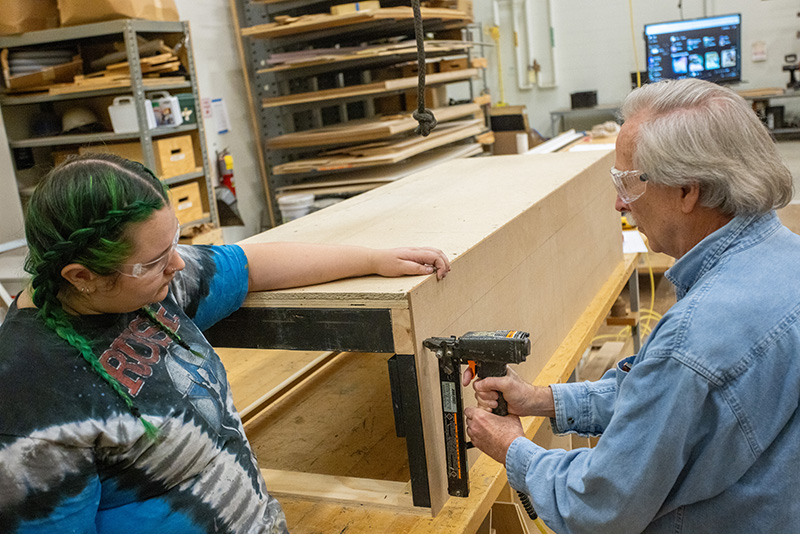
“We are the central hub of communication between all departments — director, designers, crew and actors,” said Fischer. “Stage managers keep the tabs and receipts on everything, make sure everything is scheduled and running smoothly and handle any issues that may occur.”
Being on standby is not theatre lingo that only actors must adhere to. According to Fischer, her job doesn’t end when she leaves the theatre or the tech booth. Stage managers are responsible for sustaining staff morale and positively influencing the work environment. She also explained that her role requires her to be discreet with everything she juggles.
“We are also responsible for running and maintaining the show once it moves out of the rehearsal room,” she said, “Stage management is a super crucial job but one that is hidden in the background and very rarely noticed.”



